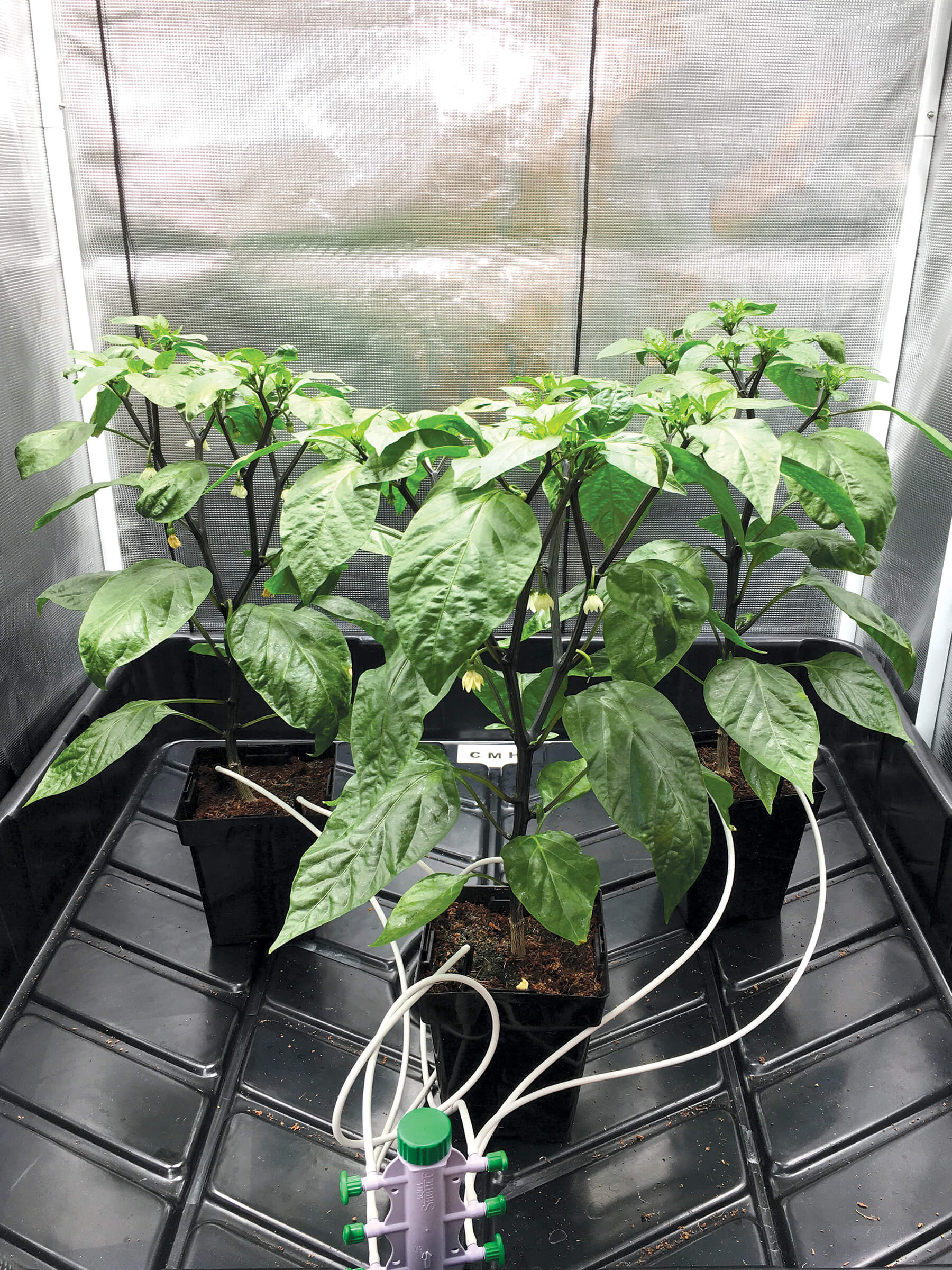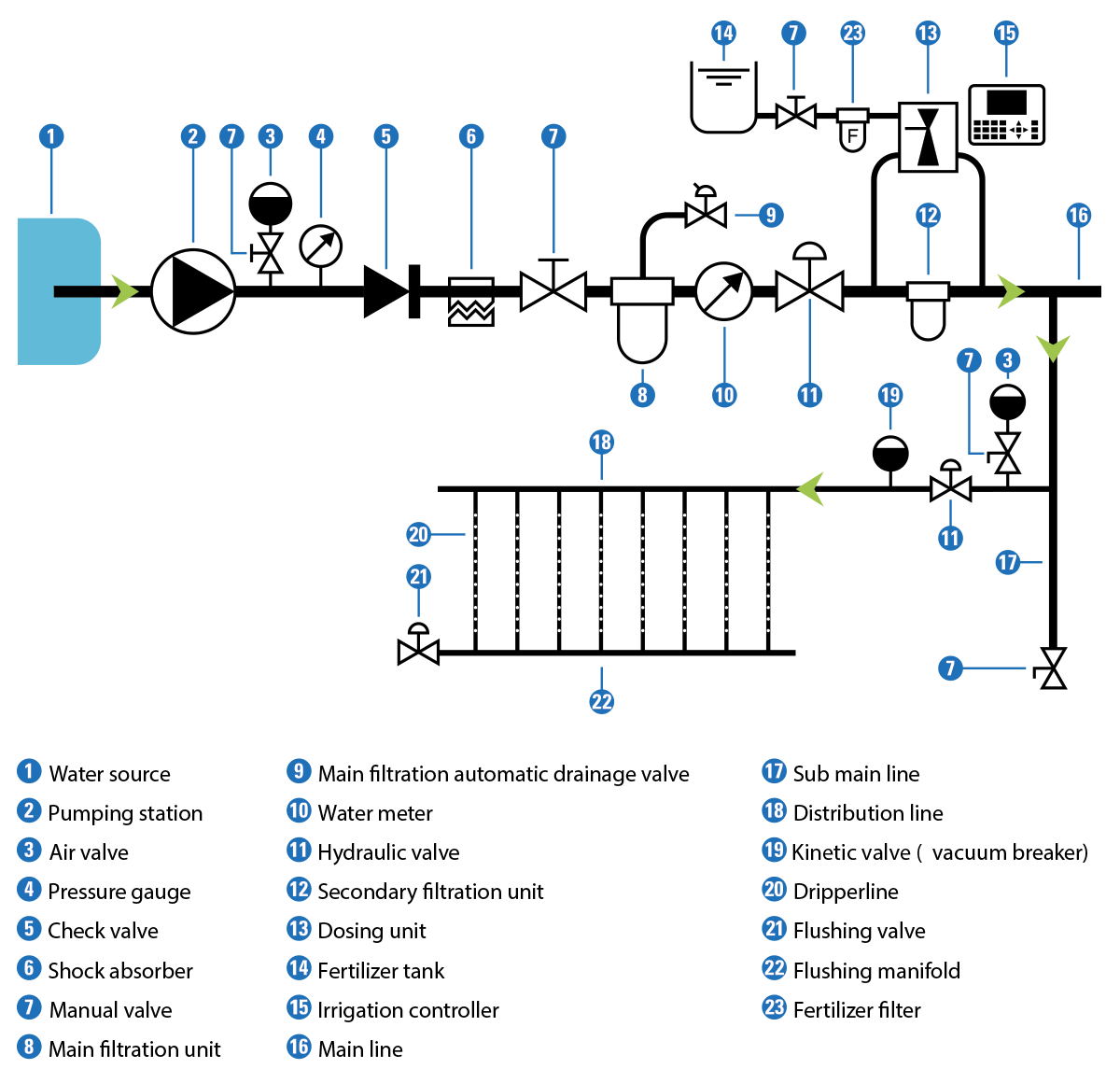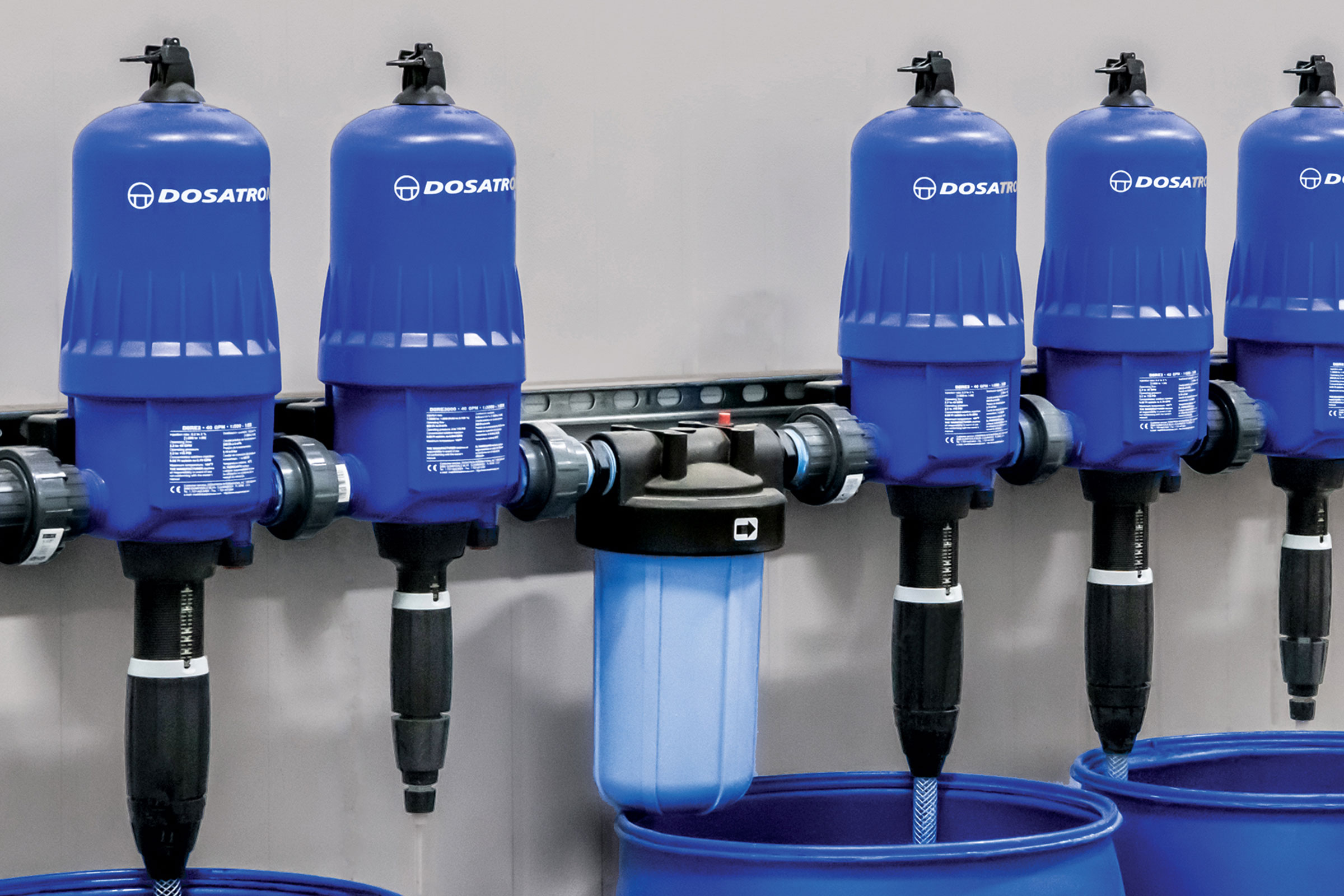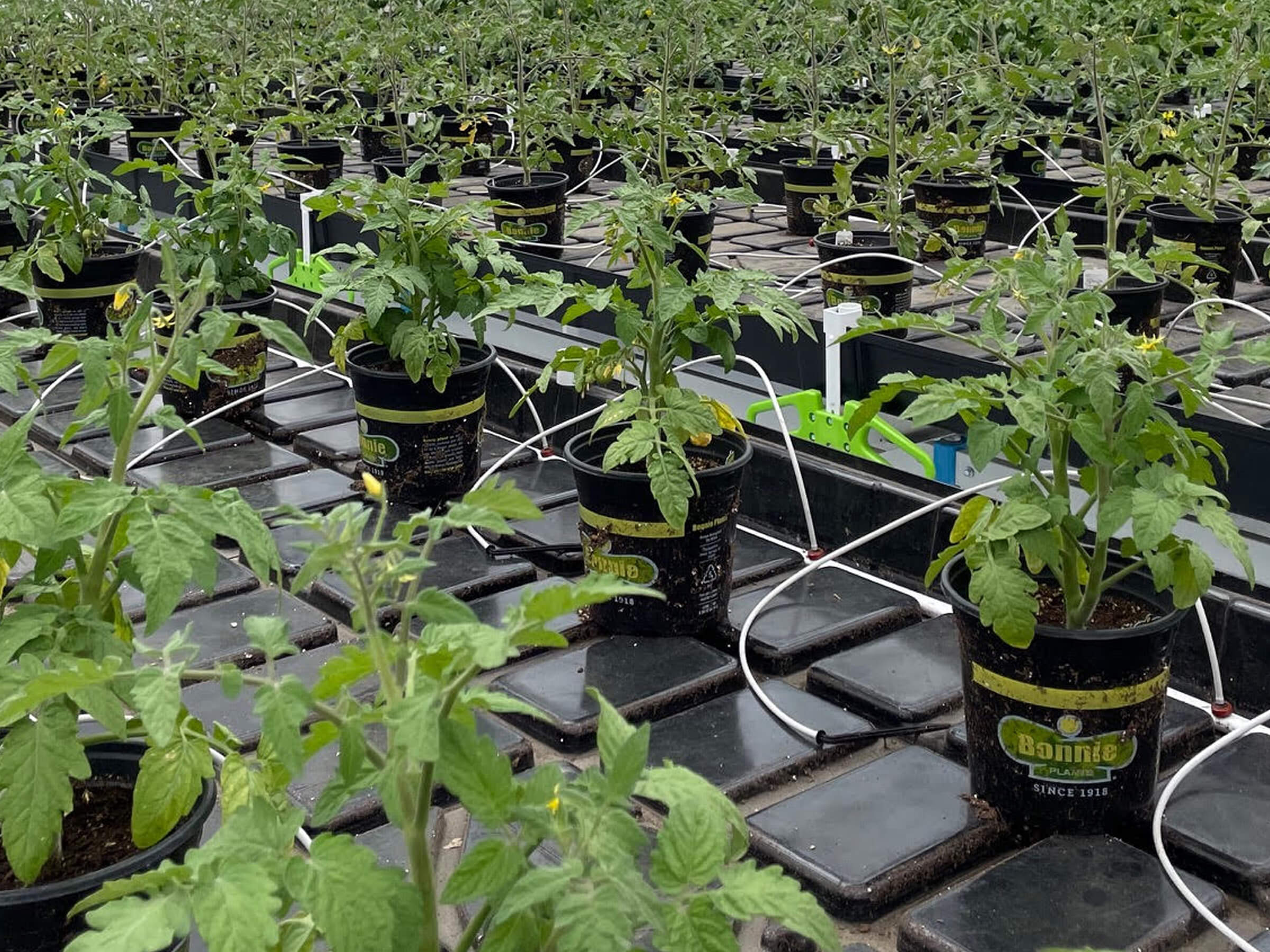Irrigation systems: from the biology to the hardware
In our last white paper, Irrigation Essentials: Basics, Biology and Best Practices we explained the biological importance of irrigation, how it can improve yields, and how drought stress can limit a crop’s productivity even without visible symptoms. The white paper also introduced what we feel is the most efficient method of irrigation for crops grown in soilless media: drip irrigation.
Now, we want to delve a little deeper into this time-tested practice. Since the first prototype in 1959, drip irrigation has experienced widespread adoption and many technological improvements. Modern drip irrigation systems are able to achieve more uniform distribution of water (and nutrients, in the case of hydroponic applications) than any other irrigation system.
Despite its popularity, many cultivators are still unsure how best to integrate drip irrigation into their space, and what equipment is required to do so. In this white paper, we’ll explore the answers to these and other questions many growers are afraid to ask.
You’ll learn:
- How drip irrigation differs depending on the size of your facility
- Tips and recommended products for customizing drip irrigation for your environment
- Steps for planning an efficient drip irrigation system
Drip irrigation, at any size
Whether you’re a hobbyist grower or a large-scale commercial operator, you can take advantage of the incredible timesaving and potentially yield increasing benefits of drip irrigation. It is important to keep in mind, however, that the scale of your environment will dictate the equipment required for your setup.
For example, a cultivator growing a few fruiting or other high-production crops in a backyard, indoor tent, or basement will likely be able to use a simple system consisting of open-flow emitters, tubing, and a low pressure pump.
However, a system like this, in particular equipment like low-pressure and open-flow parts, are not intended for use in commercial applications. Large scale growers will require industrial equipment like filtration, pressure compensation, and high-pressure pumps. This white paper will primarily focus on best practices for setting up a drip irrigation system in a modern production facility

Getting started: a commercial system overview
First, let’s look at the overview of a pressure-compensated drip system, commonly used in commercial facilities.

One way to think of irrigation systems is like the circulatory system within a human body. Both have a “pump” that moves fluid through tubes of progressively smaller sizes. This fluid contains vital nutrients and elements essential to its recipient. And both systems are complicated, requiring 24 volt AC controllers to operate correctly. (Just making sure you’re still with us!)
Below you’ll see a schematic diagram of a generic drip irrigation system. Schematics can seem complicated, but our goal is to guide you through how to use them, so they become a useful and productive companion.

Each component is relatively simple when viewed individually, and together, create a complex, fully functional and effective irrigation system. A lot goes into the planning of a commercial system like this, because a lot can go wrong if not handled correctly. Expert planning and support to help ensure proper installation is a key benefit of working with Hawthorne experts, for any aspect of crop production.
The Hawthorne Difference
Our team of technical experts can help not only with the specifics on setting up a drip irrigation system, but also with the holistic, complex interplay between irrigation and other areas of your grow, including nutrients, growing media, HVAC and lights. Our goal is to provide growers the information they need to make the right decisions for their facilities, the first time
The products and advice to keep you in the game
Hawthorne Gardening Company, in partnership with some of the largest irrigation equipment manufacturers in the world, is here to help you maximize your crop’s potential with the best irrigation management strategies and information available today.
Our dedicated team can assist you in every step of the way to ensure that your system will work exactly how it is supposed to from day one.
For more information, call Hawthorne at 888-808-4826 or fill out the form below.


